What Percentage of the Multiple Choice Do You Need to Get a 5 on the Ap Art History Exam
In 2019, just virtually 24,476 of the more than than five meg students taking AP exams took the AP Art History test. If you lot're planning to take the AP Art History exam, whether you've taken the class or have cocky-studied, read on for a breakdown of the test and CollegeVine's communication for how to all-time prepare for it.
When is the AP Art History Examination?
The 2020 AP Art History exam takes place on Friday, May 8, at 12 pm. For more than data on all of the AP exams and their 2020 test times, bank check out our web log postal service 2020 AP Exam Schedule: Everything Y'all Demand to Know .
What Does the AP Fine art History Examination Cover?
The AP Art History class teaches students the nature of art (its uses, meanings, and production) and societal responses to art throughout history. It seeks to immerse students in rich artistic traditions across cultures dating from prehistory to the present while fostering an in-depth agreement and appreciation of the history of art.
In this class, you tin wait to learn "visual, contextual, and comparative analysis applied to a variety of art forms, agreement of individual works and connections between processes and products throughout history." Although at that place are no official prerequisites for the coursework, students who have excelled in the humanities, such every bit literature or history, or in studio fine art classes, will notice that these experiences enrich their perspective as they undertake the studying of art history.
The AP Art History course was redesigned for the 2015-2016 schoolhouse year, and while much of the class content remains the same, it is now presented alongside articulate learning objectives for the exam. The scope was also narrowed to focus more than on conceptual agreement, disquisitional thinking, and analysis skills, with less emphasis placed on noesis of specific artworks. The form does still require that students become familiar with a set of specific artwork, simply this set shrunk from over 500 pieces in the previous curriculum to 250 included in the class redesign.
The AP Art History course is usually cleaved into 10 units. Below is a sequence of the units suggested past the Higher Lath, along with the percentage of questions from each unit that will appear on the multiple-option section of the AP Art History exam.
| AP Art History Unit | Percentage of Multiple-Choice Questions |
| Global Prehistory, 30,000–500 BCE | About 4% |
| Ancient Mediterranean, 3500 BCE–300 CE | About xv% |
| Early Europe and Colonial Americas, 200–1750 CE | Nigh 21% |
| Later on Europe and Americas, 1750–1980 CE | About 21% |
| Indigenous Americas, 1000 BCE–1980 CE | Near six% |
| Africa, 1100–1980 CE | About 6% |
| Due west and Central Asia, 500 BCE–1980 CE | About 4% |
| Due south, East, and Southeast Asia, 300 BCE–1980 CE | Well-nigh 8% |
| The Pacific, 700-1980 CE | About 4% |
| Global Contemporary, 1980 CE to Nowadays | Nearly 11% |
AP Art History Examination Content
The AP Fine art History exam is one of the longer AP exams, clocking in at iii hours. It comprises ii sections: one section of multiple-selection questions, the other of free response questions.
Department 1: Multiple Choice
ane hr | lxxx questions | 50% of score
The showtime department lasts one hour, is made upwardly of 80 multiple-option questions, and accounts for 50% of your total score. Of these lxxx questions, there are approximately 40 private questions, some of which are based on a colour paradigm of a work of fine art. The other xl questions are grouped into eight sets of 3-six questions, each set up based on a different color image.
Section ii: Free Response
2 hours | half-dozen questions | 50% of score
The second section is the free response section, which lasts for ii hours, includes half dozen questions, and accounts for the remaining 50% of your total score. This section is divided into 2 30-infinitesimal essays and four fifteen-minute essays, which often include images of fine art equally stimuli for the given prompt.
thirty-Minute Essays: The longer of the free response questions volition provide you with iii-5 works of art from the AP Art History course with a unifying idea. They may too telephone call upon you lot to respond with a choice of artwork of your choosing, either from inside or outside of the required course content.
Question 1: The first 30-infinitesimal gratis response question focuses on comparison, tasking you with comparing select artwork from the course (images provided), and articulating the similarities and differences between the works.
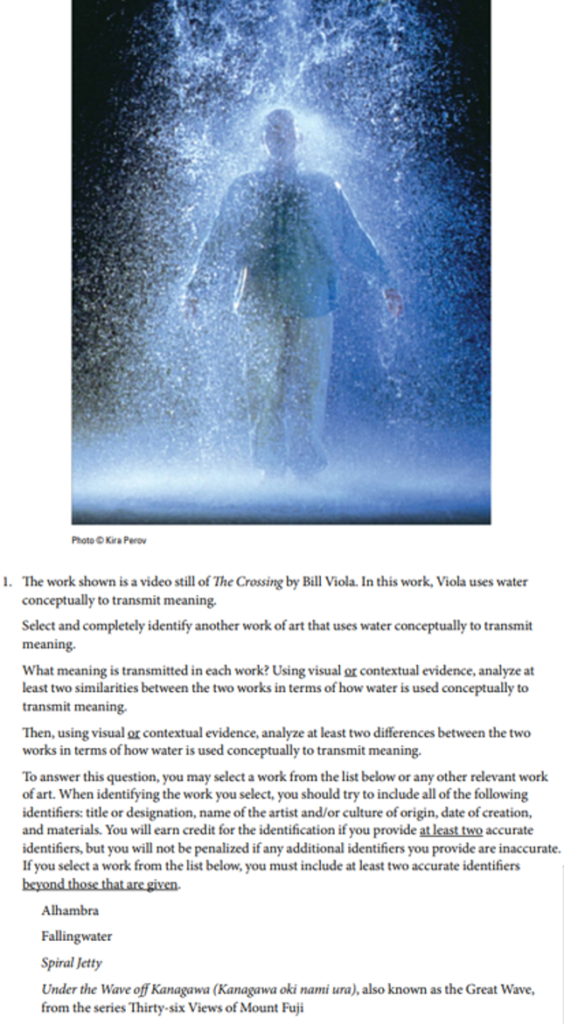
Question 2: The second long-respond free response question is about visual/contextual assay, requiring you to analyze the visual and contextual features of a work of fine art from the AP Art History grade (this is the simply free response question which will not provide an image of artwork), and respond to a prompt with a thesis supported past testify.
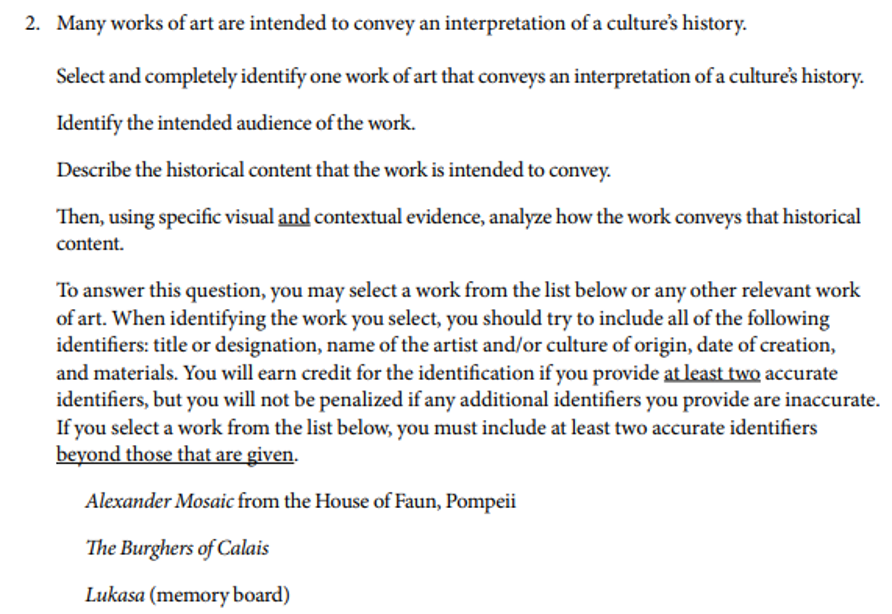
Question 3: This question tests visual assay, and requires yous to examine the visual elements of a work of art—image provided—and connect it to a tradition, way, or exercise.
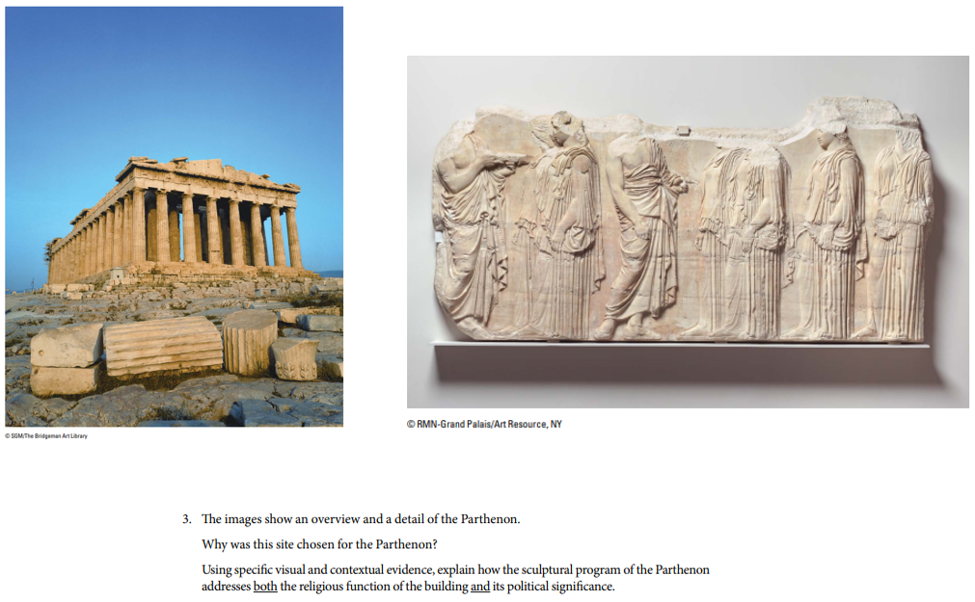
Question iv: The fourth question covers contextual assay and asks you lot to evaluate the contextual elements from an image set up and explain how context can influence creative decisions.
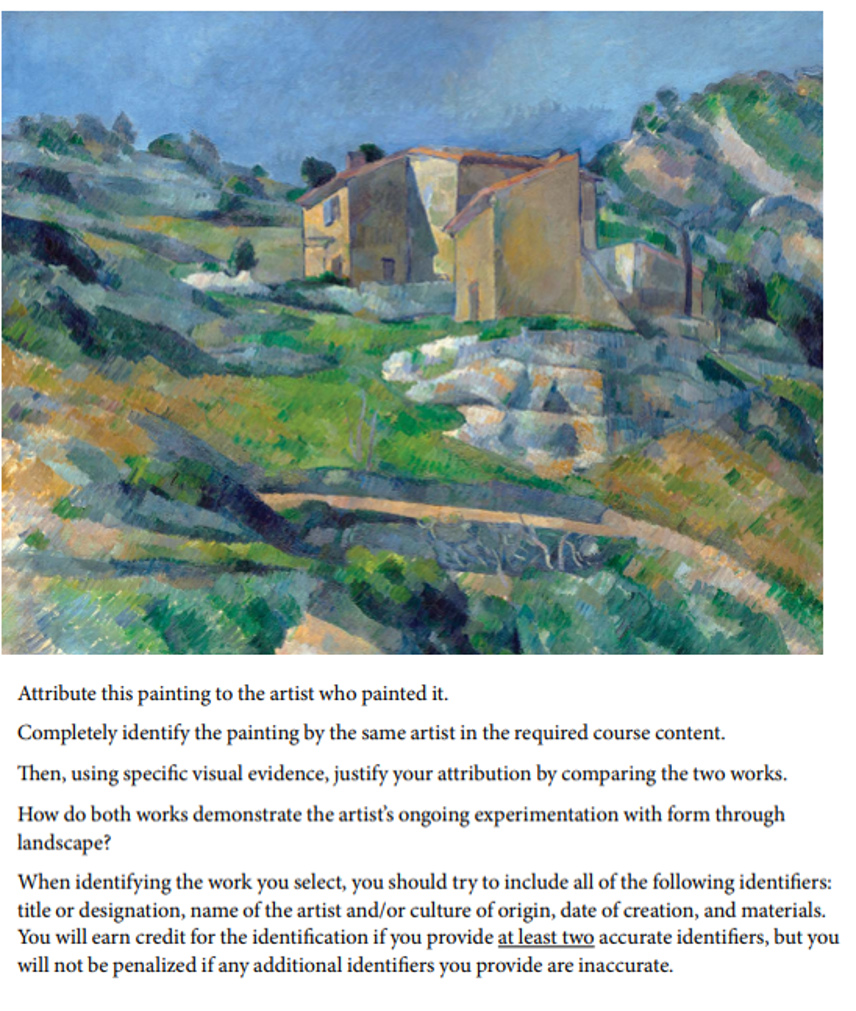
Question v: This question focuses on attribution. Hither, you must attribute a work of art to an artist and justify your assertion using visual evidence.
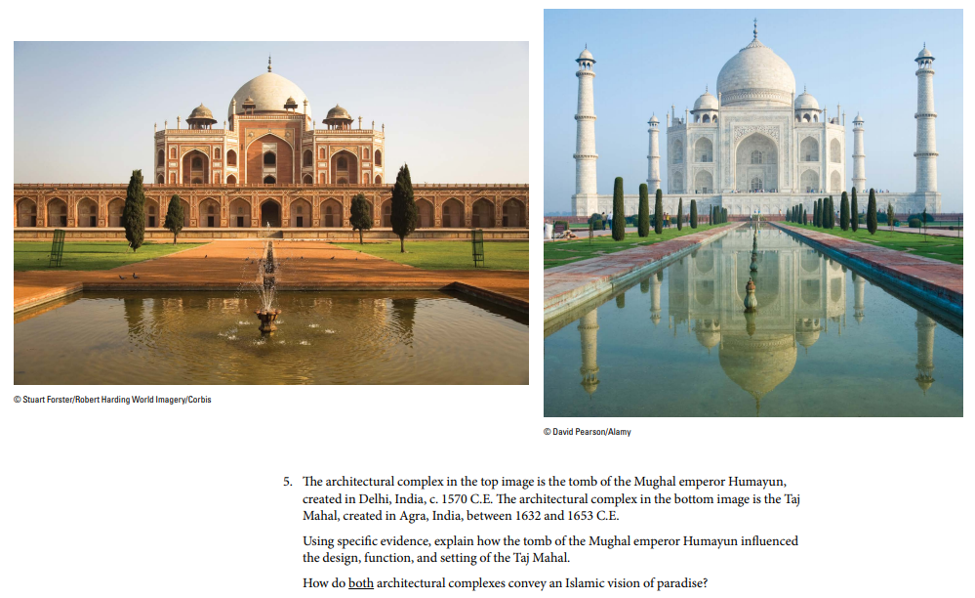
Question half-dozen: The final gratis response question spotlights continuity and change. You'll need to place the relationships—including artistic tradition, mode, and/or practice—between works of art.
AP Art History Score Distribution, Average Score, and Passing Rate
| Exam | 5 | 4 | iii | ii | i |
| AP Art History | 11.9% | 24.6% | 26.6% | 24.7% | 12.2% |
The AP Art History exam is a tough one to main, though many students laissez passer information technology with average scores. In 2019, 63.1% of students who took the AP Art History received a score of three or college. Of these, only eleven.ix% of students received the elevation score of 5, with another 24.6% scoring a 4. If you lot're curious about other score distributions, come across our post Easiest and Hardest AP Exams .
Keep in mind, credit and advanced standing based on AP scores varies widely from schoolhouse to school. Though a score of 3 is typically considered passing, information technology is not e'er enough to receive credit. Regulations regarding which APs qualify for course credits or advanced placement at specific colleges and universities can exist institute on the Higher Board website .
A total grade description that can help to guide your studying and agreement of the knowledge required for the exam tin be found in the College Board's course description .
Read on for tips for preparing for the exam.
Best Ways to Written report for the AP Art History Exam
Stride i: Appraise Your Skills
Accept a practice test to assess your initial cognition of the material. Although the Higher Board AP Fine art History website provides a number of sample test questions and exam tips, it does not provide a consummate sample exam. However, practice tests are readily available in commercial written report guides such as Barron's AP Fine art History, 3rd Edition . Varsity Tutors also offers a handful of complimentary diagnostic tests for AP Fine art History . You tin also observe an older version of test questions from the College Board's 2011 exam or image-based questions from the 2013 exam to go a full general idea of the test'southward construction and content.
Step two: Study the Fabric
The content and curriculum of the AP Art History course are based on three sets of big ideas and essential questions. These overarching concepts are intended to encourage disquisitional thinking, analysis, and appreciation of art throughout time and place, and to foster your understanding of the field of art history. The large ideas and their associated essential questions are:
- Big Thought 1: Artists manipulate materials and ideas to create an artful object, act, or result. Essential Question: What is fine art and how is it made?
- Big Idea two: Fine art making is shaped by tradition and change. Essential Question: Why and how does art alter?
- Large Idea 3: Interpretations of art are variable. Essential Question: How do we describe our thinking about art?
Through the exploration of big ideas and answering essential questions, yous should develop a foundational set up of art historical thinking skills. Below are viii distinct art history skills you'll develop in the AP Fine art History course and the percentage of the multiple-choice section of the AP Art History exam you can expect them to stand for.
| Skill | Description | Percentage of Multiple-Choice Questions |
| Visual Analysis | Analyze visual elements of works of art. | 15%–xix% |
| Contextual Analysis | Analyze contextual elements of a work of art, and connect contextual and visual elements of a work of art. | 28%–32% |
| Comparison of Works of Fine art | Compare ii or more than works of fine art. | 11%–xiii% |
| Artistic Traditions | Analyze the relationships betwixt a work of art and a related artistic tradition, mode, and/or practice. | 20%–25% |
| Visual Analysis of Unknown Works | Analyze the visual elements of a work of art beyond the image set. | 6%–8% |
| Attribution of Unknown Works | Aspect works of art. | 6%–8% |
| Art Historical Interpretations | Clarify historical interpretations of art. | vi%–viii% |
| Argumentation | Develop and back up art historical arguments. | Not assessed in the multiple-choice department |
In improver to these specific art history thinking skills, you will also need to exist familiar with the official AP Art History image ready which contains "250 works of art categorized by geographic and chronological designations, beginning with works from global prehistory and catastrophe with global contemporary works." These works are establish in the Higher Lath AP Fine art History Class Description .
The College Board refers students to Khan University's comprehensive AP Fine art History Study Guide . This website has a wealth of gratis material for effectively and efficiently learning what you'll demand to know for the examination. The College Board too provides a serial of useful videos on the AP Art History teacher site that give an overview of the curricular framework, exam format, and writing tips.
There are also a number of complimentary written report resources available online. Many AP teachers have posted complete report guides, review sheets, and test questions—for example, this website from Valerie White , a ceramics teacher. Exist conscientious when accessing these, as many will be from previous versions of the examination.
Finally, another convenient style to written report is to use one of the recently-developed apps for AP exams. These can brand studying on-the-become a lot easier. Make sure yous read reviews before choosing one—their quality varies widely. Here's an AP Art History app from Varsity Tutors that currently has 4.2 stars.
Footstep 3: Practice Multiple-Choice Questions
One time you have your theory down, examination it out by practicing multiple-choice questions. Yous tin notice these in most report guides or through online searches. You lot could likewise try taking the multiple-selection section of another practice exam.
The Higher Lath Course Description includes many exercise multiple-choice questions along with explanations of their answers. There are additional questions available in commercial study guides. Equally you become through these, try to keep track of which areas are withal tripping yous up, and go dorsum over this theory again. Focus on understanding what each question is request and keep a running list of whatever vocabulary that is still unfamiliar.
Step 4: Practice Costless Response Questions
All free response questions on the AP Fine art History test include either images of works of art (from the required form content, except in the example of attribution questions) or a list of works from the required course content to prompt student responses. For questions that ask you to identify a piece of piece of work, you should endeavor to include all available identifiers including title or designation, name of the artist and/or culture of origin, engagement of creation, and materials. You should be able to provide at least two correct identifiers, just you volition non exist penalized for any additional identifiers that are incorrect.
On the gratis response section of the AP Art History exam, a singled-out accent is placed on the force of your writing. To be successful, you will need to employ clear, appropriate, and descriptive language. Your ideas should be organized logically with coherent evidence to support your assertions. You volition demand to make fact-based inferences and closely align your writing with the prompt'due south directives.
As you complete the free response questions, make sure to keep an middle on the time. Though y'all volition exist reminded of the time remaining by the examination proctor, you volition not be forced to motion on to another question. Make sure you stay on track to address each section of every question. No points can be awarded for answers left completely blank when time runs out.
A fantastic manner to prepare for the free response questions on the AP Art History exam is to practise with them. The College Board has the gratis response questions from the 2019 , 2018 , 2017 , and 2016 exams posted on its website. Another helpful resource when preparing for the AP Art History test is also found on the College Board website— this presentation from Heather Madar of Humboldt State University provides a small sampling of the free response questions, along with insight into how students performed and the places they struggled.
Footstep v: Accept Another Practice Test
As you did at the very first of your studying, accept a do exam to evaluate your progress. You should see a steady progression of knowledge, and information technology'southward likely that y'all will see patterns identifying which areas take improved the virtually and which areas still need comeback. If you have time, repeat each of the steps higher up to incrementally increase your score.
Stride half dozen: Exam day specifics
If yous're taking the AP form associated with this exam, your teacher will walk you through how to register. If yous're self-studying, check out our blog postal service How to Self-Register for AP Exams .
For information virtually what to bring to the exam, encounter our post What Should I Bring to My AP Examination (And What Should I Definitely Go out at Home)?
Wondering what your odds of credence are to your dream schoolhouse? Using your GPA, standardized examination scores, extracurricular activities, and other data points, our chancing engine lets you know your chances of acceptance to over 500 colleges in the U.South. You can also see how you stack up against other applicants, and learn how to improve your profile. Sign up for your free CollegeVine business relationship to kickoff using our chancing engine today!
Looking for more slap-up data well-nigh AP exams? Cheque out these other posts from CollegeVine:
2020 AP Exam Schedule
How Long is Each AP Exam?
Easiest and Hardest AP Exams
Source: https://blog.collegevine.com/ultimate-guide-to-the-art-history-ap-exam/
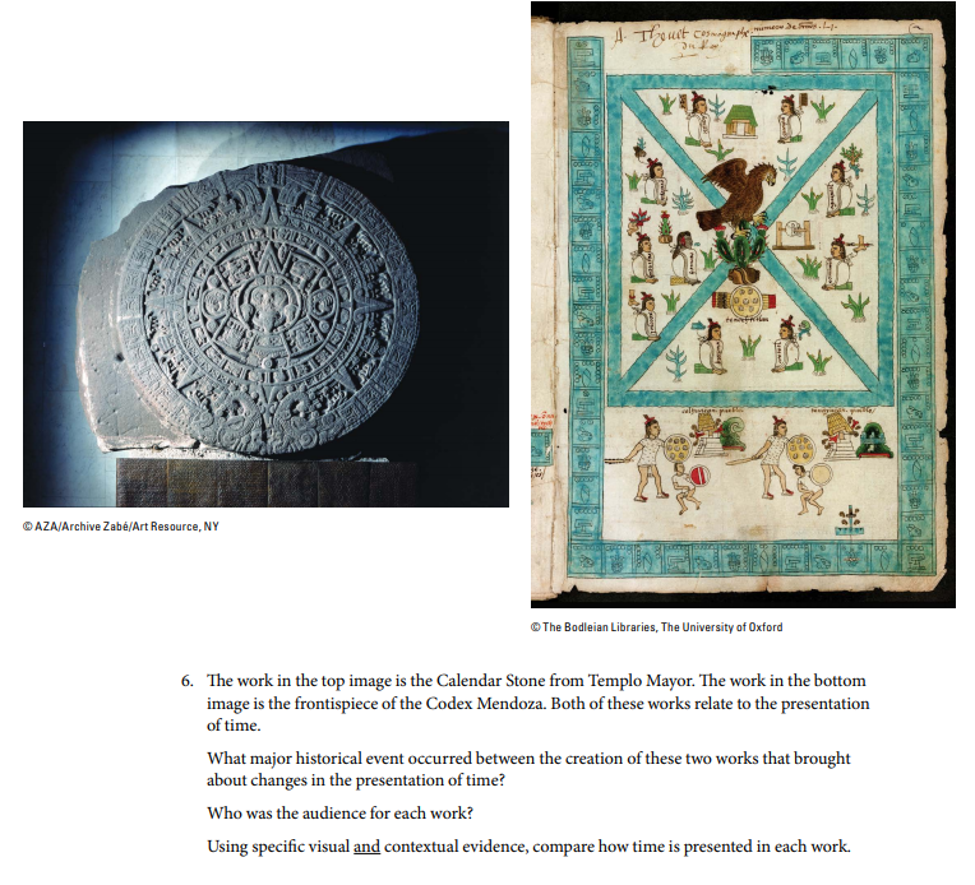
0 Response to "What Percentage of the Multiple Choice Do You Need to Get a 5 on the Ap Art History Exam"
Post a Comment